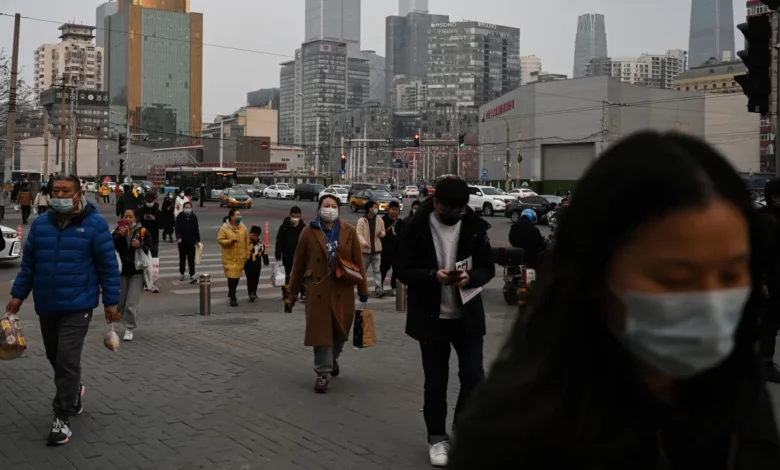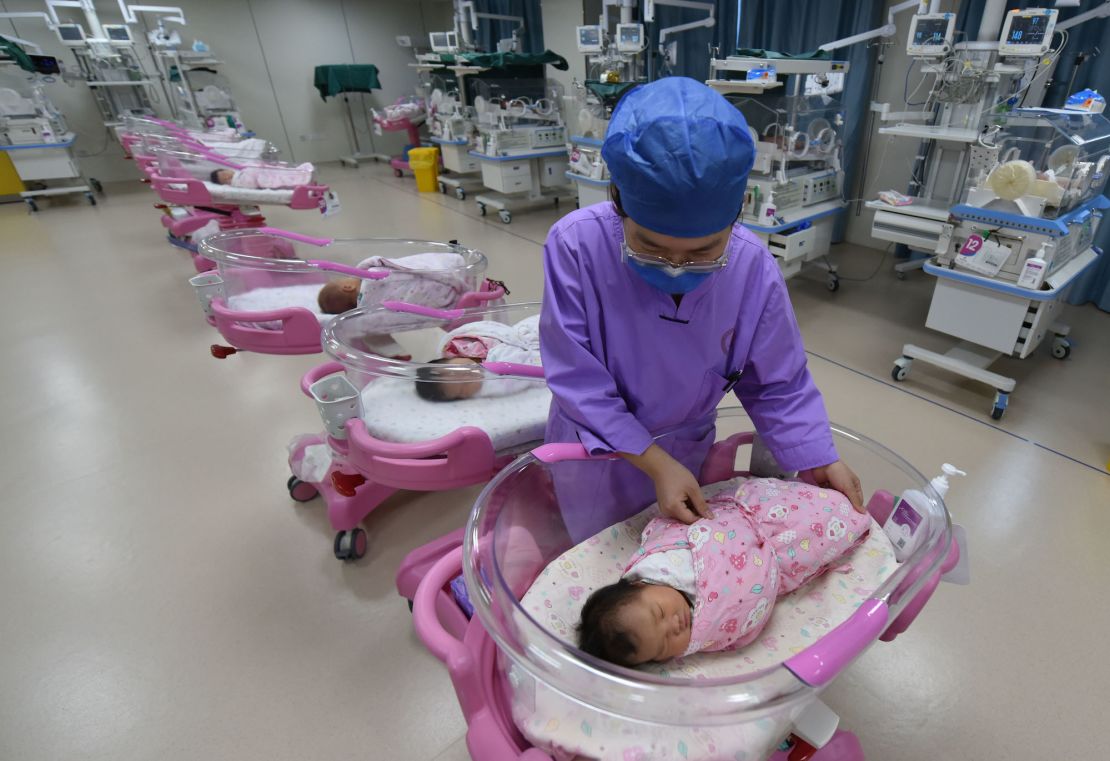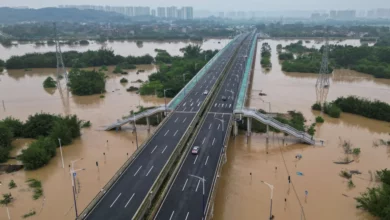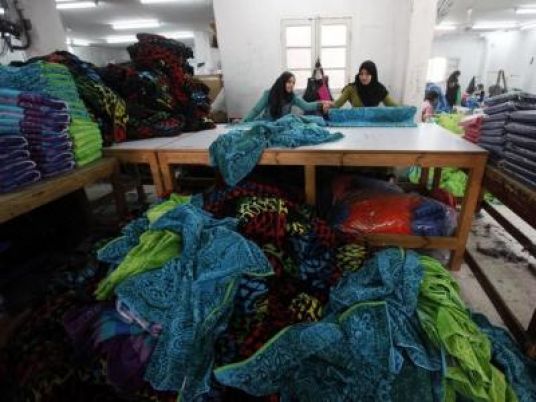
The Chinese economy was expected to recover quickly in 2023 and resume its role as the undisputed engine of global growth. Instead, it stalled to the point where it’s being called a “drag” on world output by the International Monetary Fund (IMF), among others.
Despite its many problems — a property crisis, weak spending and high youth unemployment — most economists think the world’s second largest economy will hit its official growth target of around 5 percent this year.
But that is still below the 6 percent -plus annual growth averaged in the decade before the Covid pandemic, and 2024 is increasingly looking ominous, they said. The country may be staring at decades of stagnation thereafter.
“The 2024 challenge for the Chinese economy will not be GDP growth — that will likely be above 4.5 percent ,” said Derek Scissors, senior fellow at the American Enterprise Institute, a center-right think tank. “The challenge will be that the only direction from there is down.”
Without major market reforms, the country could be stuck in what economists call “the Middle Income Trap,” he warned, referring to the notion that emerging economies grow quickly out of poverty only to get trapped before they reach high-income status.
For decades since China re-opened to the world in 1978, it was one of the fastest growing major economies on Earth. Between 1991 and 2011, it grew by 10.5% annually. After 2012, when Xi Jinping became president, the expansion slowed, but it was still averaging 6.7% in the decade through 2021.
“The second half of the 2020s will … see slowing growth,” Scissors said, citing a correction in the troubled real estate sector coupled with demographic decline.
The IMF has also become gloomier about the longer-term outlook. In November, it said it expected China’s growth rate to reach 5.4% in 2023, and gradually decline to 3.5% in 2028 amid headwinds ranging from weak productivity to an ageing population.
What has changed?
The Chinese economy, which is plagued by a litany of challenges, didn’t get to this position overnight.
Scissors said the previous administration of President Hu Jintao had flooded the economy with liquidity in 2009 during the depths of the global financial crisis to boost growth. Xi’s government was reluctant to rein in the borrowing after coming to power in 2012, which caused structural problems to build up.
Logan Wright, director of China markets research at Rhodium Group, agreed, saying: “The slowdown in China’s economy is structural, caused by the end of an unprecedented expansion in credit and investment over the past decade.”
The country’s financial system simply won’t be able to generate the same levels of credit growth that it has in previous years, he said, therefore Beijing will have far less control over the direction of its economy than it has in the past.
What made things worse was Beijing’s stubborn embrace of a zero-Covid policy of stringent lockdowns and its sweeping crackdown on private enterprise, which deeply hurt confidence and battered the most vibrant part of the economy.
The consequences of these policies can be seen in the slowdown this year. Consumer prices have been weak for most of 2023 due to slugglish demand, and there is a risk of a deflationary spiral.
The real estate crisis has deepened. Plunging home sales have pushed some healthy developers like Country Garden to the brink of collapse. The crisis has spilled over to the massive shadow banking sector, causing defaults and sparking protests across the country.
Local governments are struggling with financial difficulties after three years of Covid spending and declining land sales. Some cities can’t repay their debts and have had to cut basic services or reduce medical benefits for seniors.
Youth unemployment has become so bad that the government stopped publishing the data.
Foreign companies have grown wary of Beijing’s rising scrutiny and are pulling out of the country. In the third quarter, a measure of foreign direct investment (FDI) into China turned negative for the first time since 1998.
A September survey by the American Chamber of Commerce in Shanghai showed that only 52% of respondents were optimistic about their five-year business outlook, the lowest level since the survey began in 1999.
Will China become Japan?
As China’s growth slows, some economists have drawn comparisons with Japan, which experienced two “lost decades” of stagnant growth and deflation after its real estate bubble burst in early 1990s.
But Scissors doesn’t think it will go that way, at least not immediately.
“The rest of the 2020s won’t look like a lost decade — Chinese GDP growth will stay well above zero,” he said.
In the longer term, however, the biggest economic problem could be demography. Last year, China’s population fell to 1.411 billion, marking its first decline since 1961.
Its total fertility rate, the average number of babies a woman will have over her lifetime, also dropped to a record low of 1.09 last year from 1.30 just two years before. That means China’s fertility rate is now even lower than Japan’s, a country long known for its ageing society.

Demographics can have a significant impact on an economy’s growth potential. A decline in the labor supply and increased healthcare and social spending could lead to a wider fiscal deficit and higher debt burden.
A smaller workforce could also erode savings, resulting in higher interest rates and declining investment. Housing demand, for example, may fall in the long term.
“In the 2040s, population contraction will make aggregate growth impossible,” Scissors said. “Without sharp policy changes, there’s no bounceback for China — the 2030s will be worse than the 2020s.”
Can Xi set a new course?
China’s leadership, which gathered this month to discuss economic targets and policies for next year, has indicated that it will ramp up fiscal and monetary support for the economy. Officials have even pledged to strengthen “economic propaganda” and “public opinion guidance” in a bid to boost confidence.
Chinese media have reported that the government may set next year’s economic target again at around 5%, which seems ambitious when compared with independent forecasts. The official target will be announced in March, when China holds its annual legislative meetings.
But the moves aren’t likely to help fix the structural problems.
“Policymakers seem to believe that with a bit of stimulus and a turnaround in sentiment, the economy can get back on a stronger path,” said Julian Evans-Pritchard, head of China Economics at Capital Economics. He said officials also appear to be hoping that setting an ambitious growth target can help boost confidence.
“While there is some truth to this, we think that officials are underestimating the extent to which China’s slowdown is structural in nature and wont be so easily reversed.”
“Most of the slowdown reflects a structural decline in productivity and income growth, rather than cyclical weakness that can be addressed through demand-side stimulus or other confidence-boosting measures,” he said.
If Beijing resorts to its old playbook, such as greater borrowing, it could still spur growth in 2024, but only as “an economic pain-killer, not a cure,” according to Scissors.




